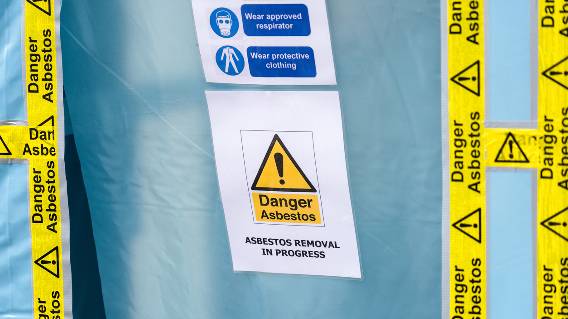Dangers of Legacy Asbestos Detailed in UK Study

A recently published study from the United Kingdom has shown that legacy asbestos lingering in commercial and residential construction is more dangerous than expected.
In what is believed to be the largest study in the world of legacy asbestos, researchers found that almost two-thirds of it had aged enough, or was damaged enough, for fibers to become airborne and put people at risk.
An estimated 1 million samples were collected in a six-month period across Great Britain as part of the study, completed by the National Organisation of Asbestos Consultants and the trade group Asbestos Testing and Consultancy.
What they found was alarming. The observations were shared at a Parliamentary event in London earlier this month, bringing attention to an asbestos management strategy – similar to what the U.S. has– that is flawed.
“We weren’t looking for this, but when we looked at the data the figures leapt out at us. Asbestos left in the buildings as ‘safe’ was actually now in a damaged state,” said NORAC Chairman Jonathan Grant. “When asbestos is damaged it may create a risk to occupants by releasing fibers which, if inhaled, can lead to irreversible cancer.”
EPA’s Risk Evaluation Key for U.S.
Asbestos can lead to a variety of health problems, including malignant mesothelioma, a cancer with no cure that is caused almost exclusively by the inhalation or ingestion of the toxic fibers.
The UK banned asbestos in 1999, but legacy asbestos remains – like in the U.S. – in most construction that was done before the 1980s.
Although heavily regulated, asbestos is not banned in the U.S. entirely. The U.S. Environmental Protection Agency is in the midst of finalizing its Risk Evaluation for Asbestos as part of the Toxic Substances Control Act.
Part 2 of the Risk Evaluation, which involves legacy asbestos, is expected to be finished by the end of 2023 and could lead to a complete ban of the toxic mineral and a more complete strategy for handling it.
Eliminating Legacy Asbestos
Earlier this year, the UK had discussed a long-term plan that would remove asbestos from all buildings within a 40-year timeframe, but that plan was rejected by legislators as too costly.
“It’s an impossible situation,” said Kevin Bampton, chief executive officer of the British Occupational Hygiene Society in London. “Developers, social housing landlords, schools and hospitals don’t want to have asbestos removed from property [because it is costly], but clearly the management strategies in place are not working.”
An estimated 2,700 cases of mesothelioma are diagnosed in the UK annually, one of the highest per-capita rates in the world. Some European countries that banned asbestos more than a decade ago are moving forward with plans to have it removed from all structures in the future.
Current Asbestos Regulation Falls Short
In the U.S., the mining of asbestos stopped more than two decades ago, and the importation of asbestos has dropped dramatically.
In recent years, the chloralkali industry has consumed all raw asbestos being imported into the U.S., where it is used for semipermeable diaphragms to make chlorine.
A small number of products made with asbestos are still imported – vehicle friction items, sheet gaskets, brake blocks, etc. – but the biggest threat to the public today is the legacy asbestos.
The general perception, though, is that if left undisturbed, asbestos used earlier in construction is not a threat. That theory is now being seriously challenged in the UK.
There is potential legislation being discussed that would require an asbestos survey of any commercial or residential building being sold, if it was built before 1999. There is currently an ongoing asbestos inspection of all schools in the UK, which is not being done today in the U.S.
“Nobody should be selling a building with a toxic substance hidden in it that the buyer doesn’t know about,” Grant said. “At the same time, when we upgrade our homes and heating systems, we don’t want to expose workers, or the building occupants, to fatal risk. It’s applying the same common sense to asbestos that we do to other hazards.”